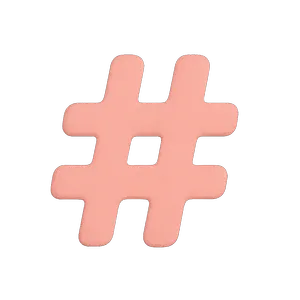In today's digital age, event organizers are looking for innovative ways to make their events stand out among the crowd. One way to do this is by incorporating a social media wall into your event. A social media wall displays live social media posts from various platforms, such as Twitter, Instagram, Facebook, LinkedIn, and Pinterest, on a large screen. This article will guide you through the process of creating a social media wall for your event.
Understanding the Benefits of a Social Media Wall
Before we dive into the technical details of creating a social media wall, let's first explore why you should consider having one for your event.

Boost Audience Engagement
A social media wall can keep your audience engaged throughout the event by displaying real-time updates from attendees and speakers. Being able to see their posts on the big screen creates a sense of inclusion and involvement, encouraging people to participate and share their experiences.
For example, imagine you’re hosting a marketing conference and one of your keynote speakers shares a particularly insightful quote. Attendees can take a picture of the quote and share it on social media, using the event hashtag. The social media wall can then display this post, allowing other attendees to engage with the quote and share their own thoughts and opinions.
Showcase User-Generated Content
A social media wall for events showcases user-generated content, such as photos and videos, from attendees. This not only promotes your event but also makes attendees feel appreciated and involved.
Imagine you’re hosting a music festival and attendees are taking photos and videos of their favorite bands. By displaying this user-generated content on the social media wall, attendees can see their photos and videos on the big screen, creating a sense of excitement and involvement.
Increase Brand Awareness
A social media wall can be branded with your company logo and event hashtag, increasing brand awareness among attendees and their followers. This can also generate user-generated content that can be used for marketing purposes in the future.
For example, if you’re hosting a product launch event, the social media wall can display posts from attendees who are excited about the new product. This can generate buzz and excitement around your brand, increasing the chances of attendees sharing their experiences on social media and generating more user-generated content.
Encourage Networking Opportunities
A social media wall can act as a conversation starter and encourage networking opportunities among attendees. It also creates a community-like environment where attendees can feel comfortable communicating and sharing their experiences with each other.
Imagine you’re hosting a business conference and attendees are sharing their thoughts and insights on social media. By displaying these posts on the social wall, attendees can see what others are saying and connect with each other based on shared interests and experiences.
In conclusion, a social media wall can provide numerous benefits for your event, from boosting audience engagement to increasing brand awareness and encouraging networking opportunities. By considering these benefits, you can create a social media wall that is tailored to your event and maximizes its impact on attendees.
Choosing the Right Social Media Platforms
Not all social media platforms are created equal. When choosing which platforms to display on your social media wall, consider your target audience and what platforms they are most likely to use. It's important to understand the strengths and weaknesses of each platform to ensure that you're using the right one for your event.

Twitter is a great platform for live updates and real-time conversations. It's ideal for events that have a lot of speakers or sessions with multiple tracks. During an event, attendees can use event-specific hashtags to follow updates and engage in conversations with other attendees. Twitter can also be used to share links to relevant articles and resources, as well as to promote upcoming events.
However, it's important to keep in mind that Twitter's fast-paced nature means that tweets can quickly get lost in the shuffle. To make sure your tweets are seen, it's important to tweet frequently and use eye-catching graphics and videos.
Instagram is a popular platform for sharing photos and videos. It's ideal for events that are visually appealing and have a lot of photo opportunities, such as food festivals, concerts, and art shows. Instagram can be used to showcase event highlights, behind-the-scenes photos, and user-generated content.
One of the great things about Instagram is that it allows you to tell a visual story. You can use a combination of photos and videos to give attendees a sense of what it was like to be at the event. Additionally, Instagram's use of hashtags makes it easy for attendees to find and engage with event-related content.
Facebook is a widely used platform that can be great for promoting events and sharing updates. It's ideal for events that target a wider audience, such as conferences or trade shows. Facebook can be used to create event pages, share event details, and engage with attendees before, during, and after the event.
One of the benefits of using Facebook is that it allows for more detailed event descriptions and longer-form content. You can use Facebook to share blog posts, articles, and other resources that are relevant to your event. Additionally, Facebook's event pages allow attendees to RSVP and share the event with their networks.
LinkedIn is a professional networking platform and can be great for promoting business events and encouraging post-event communication among attendees. LinkedIn can be used to create event pages, share event details, and connect with attendees before, during, and after the event.
One of the benefits of using LinkedIn is that it allows you to target specific industries and professionals. You can use LinkedIn to reach out to potential attendees and sponsors, as well as to share relevant content and resources. Additionally, LinkedIn's messaging feature allows attendees to connect with each other after the event.
Pinterest is a visual platform that can be great for displaying images of products or services being showcased at an event, such as a fashion show or home expo. Pinterest can be used to create boards that showcase event-related content, such as vendor products, event decor, and attendee outfits.
One of the benefits of using Pinterest is that it allows you to showcase your event in a visually appealing way. You can use high-quality images and graphics to create boards that tell a story about your event. Additionally, Pinterest's search feature allows users to discover event-related content even after the event has ended.
Selecting a Social Media Wall Tool
Social media walls are a great way to engage your audience and showcase user-generated content. There are numerous social media wall tools available on the market, each with their own unique features and benefits. When selecting a tool, it's important to consider the following key features:
Key Features to Look For
- Real-time updates: Ensure that the tool you select provides real-time updates, so that your social media wall stays up-to-date with the latest content.
- Customizable design: Look for a tool that offers customizable design options, so that you can create a social media wall that aligns with your brand and event.
- Moderation options: Moderation options are important, as they allow you to filter out any inappropriate or irrelevant content from your social media wall.
- Integration with multiple platforms: Consider a tool that integrates with multiple social media platforms, as this will allow you to showcase content from a variety of sources.
- Analytics and reporting: Analytics and reporting features can provide valuable insights into the performance of your social media wall, allowing you to optimize it for maximum engagement.

Top Social Media Wall Tools
The following are some of the top social media wall tools available:
- Tint: Tint is a popular social media wall tool that allows you to aggregate content from multiple social media platforms. It offers a range of customization options, including the ability to add your own branding and design elements.
- Walls.io: Walls.io is another great social media wall tool that offers a range of customization options and integration with multiple platforms. It also offers powerful moderation features, allowing you to filter out any unwanted content.
- Taggbox Display: Taggbox offers a social media wall tool that specializes in hashtag-based content. It allows you to create a social media wall based on a specific hashtag, making it a great choice for events and campaigns.
- Flockler: Flockler is a social media wall tool that offers a range of customization options and integration with multiple platforms. It also offers powerful analytics and reporting features, allowing you to track the performance of your social media wall.
- Hootsuite: Hootsuite is a popular social media management tool that also offers a social media wall feature. It allows you to aggregate content from multiple social media platforms and customize the design of your social media wall.
Customization Options
Customizable design options can elevate your social media wall to the next level. Consider branding your social media wall with your company logo, event hashtag, and event colors to increase brand awareness and engage your audience. You can also customize the layout and design of your social media wall to make it more visually appealing and engaging.

Pricing and Plans
When selecting a social media wall tool, consider the pricing and plans offered by the provider. Some tools offer free plans with limited features, while others require a fee for full customization and integration options. It's important to choose a tool that fits within your budget and offers the features you need to create a successful social media wall.
Conclusion
A social media wall can add an additional level of engagement and interaction to your event. By understanding the benefits of a social media wall, choosing the right social media platforms, and selecting the right social media wall tool, you can create a truly immersive and unforgettable experience for your attendees.










-p-500.webp)



.jpeg)















